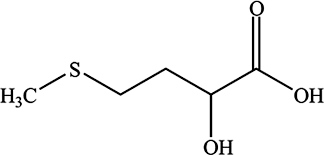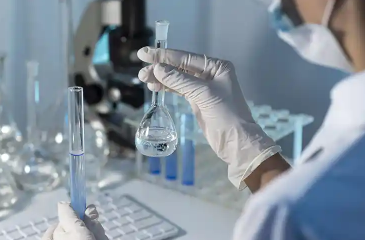Isopropyl Esters of Methionine Hydroxyl Analogues (HMBi) and Their Promise in Biochemistry
Methionine is a crucial amino acid in biochemistry, playing a vital role in protein synthesis and metabolism. HMBi, a modified derivative of methionine, incorporates hydroxyl analogs that alter its properties. The isopropyl esters in HMBi enhance its effectiveness in various biochemical processes.

UniVOOK Chemical is a leading producer of industrial chemicals and advanced biochemical materials. We offer a broad range of products and custom manufacturing services, alongside supply chain solutions for both local and global organizations. Interested in learning how HMBi can advance biochemical research and its practical applications? Read the full article!
Biochemical Importance of Methionine Hydroxyl Analogues
Key Functions of Methionine in Protein Synthesis and Metabolism
Methionine is an essential amino acid. It helps build proteins in the body. Methionine is also needed for the metabolism of cells. Without it, many important functions in the body would not work properly. It plays a key role in starting protein chains and is involved in several metabolic pathways.
How Hydroxyl Analogues Differ from Standard Methionine
Hydroxyl analogues of methionine are slightly different. They have a hydroxyl group added to their structure. This small change can affect how the molecule works in the body. These analogues can interact differently with enzymes and receptors, making them useful in different biochemical processes.
Their Potential to Enhance Biochemical Pathways
The changes in the structure of methionine hydroxyl analogues can improve certain biochemical reactions. They may help increase the efficiency of specific pathways. This could be useful in research and in applications where better results are needed, such as drug development or metabolic studies.
Mechanisms of Action: How HMBi Works in Biochemistry
Chemical Behavior of Isopropyl Esters in Metabolic Processes
Isopropyl esters like HMBi act as modified versions of methionine. These esters can make the molecule more stable in the body. This helps them function better in metabolic processes. They are also more easily absorbed by cells and tissues, improving their effectiveness.
Interactions with Enzymes and Cellular Pathways
HMBi interacts with different enzymes in the body. These enzymes help speed up chemical reactions. By influencing these enzymes, HMBi can change the way the body processes certain compounds. This can lead to better results in biochemical pathways.
Potential Effects on Protein Synthesis and Stability
HMBi has the potential to affect how proteins are made in cells. It may help stabilize proteins and improve their function. By supporting protein synthesis, HMBi can play a role in maintaining healthy cell activity. This makes it a promising tool in biochemistry and biotechnology.
Advancements in Biochemical Research with HMBi
Studies and Experiments Exploring HMBi‘s Role in Biochemical Processes
Researchers have been studying HMBi for several years. They focus on its effects in different biochemical processes. Experiments have shown that HMBi can change how certain enzymes work. These studies provide useful insights into how HMBi can influence metabolic pathways. Researchers also explore its potential to enhance chemical reactions.
How HMBi Is Being Utilized in Lab Settings
In the lab, HMBi is used in many different ways. It helps scientists test how molecules interact in biochemical reactions. HMBi also plays a role in studying metabolic pathways. Scientists use it to better understand cell function and protein production. By using HMBi, researchers can discover new ways to improve reactions and achieve better results.
Success Stories and Discoveries in Research Using HMBi
HMBi has led to some exciting discoveries in research. One key success is its potential to improve protein synthesis. Researchers have found that HMBi can help stabilize proteins and increase their activity. Another important discovery is its ability to enhance specific chemical reactions. These findings are helping to push the boundaries of biochemical science.

HMBi‘s Applications in Biotechnology and Pharmaceuticals
Use of HMBi in Drug Design and Development
HMBi is showing promise in the pharmaceutical industry. It is being used to create new drugs. Its ability to affect protein function makes it useful in designing targeted therapies. Drug developers use HMBi to help design molecules that are more effective in treating diseases. The pharmaceutical industry is keen to explore its full potential.
Potential Therapeutic Applications for HMBi-Based Compounds
HMBi-based compounds could be used in a variety of therapies. For example, they may help treat diseases that involve protein malfunction. These compounds could improve how drugs work in the body. They might also be used in treatments for metabolic disorders. Researchers continue to explore new ways HMBi can be used to create better therapies.
The Growing Interest in HMBi for Biotechnological Innovation
Interest in HMBi is growing in biotechnology. The unique properties of HMBi make it valuable for a wide range of applications. Biotechnology companies are exploring how HMBi can be used to develop new products. HMBi is being studied for use in improving agricultural processes, food production, and environmental applications. Its potential in these areas is sparking excitement and innovation.
Benefits and Challenges of Using HMBi
Enhanced Efficacy in Biochemical Processes and Reactions
HMBi has several benefits. It can improve the efficiency of biochemical reactions. The isopropyl ester modification helps HMBi interact more effectively with enzymes. This makes it a useful tool in speeding up chemical processes. Researchers have shown that HMBi can enhance specific biochemical pathways, leading to better results.
Potential Drawbacks and Challenges in Its Application
Despite its advantages, there are challenges with using HMBi. One concern is its stability in different environments. It may degrade over time, affecting its performance. Another challenge is the cost of producing HMBi in large quantities. Researchers are working to find ways to overcome these issues. They are also exploring ways to make HMBi more cost-effective for industrial use.
Long-Term Sustainability and Stability in Industrial Settings
The long-term use of HMBi in industry presents both benefits and challenges. HMBi has the potential to provide lasting results in various biochemical applications. However, for it to be sustainable, scientists need to ensure it remains stable over time. They are researching ways to improve its shelf life and reduce production costs. Making HMBi more stable will be key to its success in long-term industrial settings.
Final Words
Isopropyl esters of methionine hydroxyl analogues (HMBi) provide numerous advantages. These compounds enhance biochemical reactions and are valuable in research aimed at understanding cell function. HMBi can influence protein synthesis and stability, making it a key focus in scientific exploration. Researchers are investigating HMBi’s potential in drug development and biotechnology, where it shows promise for improving medical treatments and industrial applications. Additionally, HMBi can help optimize metabolic processes. To discover how HMBi can drive progress in biochemistry and innovation, dive deeper into its remarkable potential from UniVOOK Chemical!
Access Our Product Catalog and More to Discover High-Performance Chemicals Tailored to Your Business Needs




